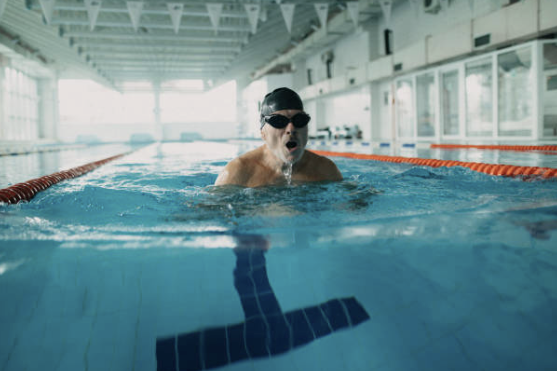Swimming is a great sport because it offers a low-impact way to improve cardiovascular fitness, mobility, and strength. However, despite its many benefits, swimming injuries are often due to overuse injuries from poor biomechanics. Early recognition of these poor stroke mechanics can often prevent future injuries and improve overall swimming performance.
Common Swimming Injuries
Before delving into how physiotherapy can help, it’s important to understand the most common swimming-related injuries. These include:
- Shoulder Injuries (Swimmer’s Shoulder): Overuse of the shoulder joint is one of the most common swimming injuries. It can cause pain, inflammation, and limited mobility, especially in swimmers who perform strokes like freestyle and butterfly.
- Knee Injuries (Breaststroke Knee): This injury results from the repetitive frog-kick motion in the breaststroke. The strain on the knee joint can lead to inflammation, pain, and discomfort.
- Lower Back Pain: The arching motion in strokes like the butterfly or backstroke can lead to lower back strain, especially if there’s poor body alignment or improper technique.
- Neck Injuries: Neck pain can arise from excessive twisting and turning during strokes like backstroke, which puts strain on the cervical spine.
When to Seek Physiotherapy for Swimming Injuries
When swimming injuries occur, physiotherapy can play a crucial role in recovery and preventing future issues. Physiotherapists are trained to assess, diagnose, and treat musculoskeletal injuries, making them an excellent resource for swimmers dealing with pain or injury.
A Myphysio physiotherapy consult will involve a comprehensive physiotherapy assessment and treatment. Our physiotherapist can help with the following:
- Diagnosis and how to rehabilitate the injury
- Assessment to identify muscular weakness and mobility restrictions.. This is followed by strengthening exercises to address these swimming-specific impairments
- Manual therapy to help relieve pain to you an perform better
- Swimming technique review and how to improve performance
If you experience persistent pain, discomfort, or decreased performance, it’s important to consult a physiotherapist. Early physiotherapy intervention can prevent minor injuries from becoming long-term issues. Swimmers should also consider physiotherapy if:
- They notice a weakness in certain muscle groups.
- They are recovering from an injury and need guidance on rehabilitation exercises.
- They want to improve their swimming technique or performance and prevent injury.
While swimming is a low-impact sport, it doesn’t mean swimmers are immune to injury. Physiotherapy plays an important role in treating and preventing swimming-related injuries by addressing the root cause of the problem, promoting healing, and improving overall strength and mobility. Whether you’re recovering from an injury or looking to optimize your swimming technique, physiotherapy can help you return to the water stronger and more resilient than before.
Myphysio physiotherapists can provide you with a personalised treatment program for your swimming injuries. Our experienced physiotherapist will be able to provide you with a tailored exercise program to keep your muscles and joints in top performance. Book an appointment today to get your health journey started with our friendly physiotherapy team. You can also follow us on Facebook or Instagram for tips on managing your swimming injury.
This information is for educational purposes only and is not intended to replace the advice of your doctor or health care professional. We encourage you to discuss any questions or concerns you may have with your health care provider.

